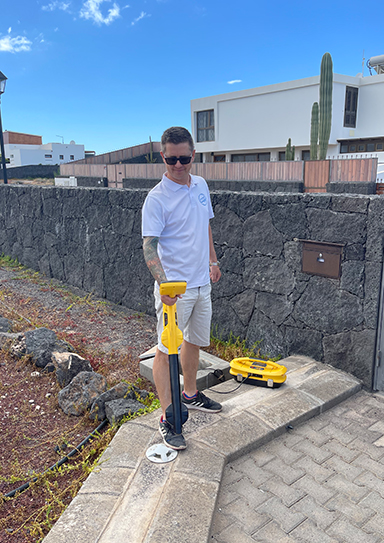One of the good things about living in the 21st century is that virtually all of our utilities are running underground, so gone are the days when we had telegraph poles to run our telephones, and so on. It keeps our towns and cities clear of all of those.
However, there is a downside, and that is that if something goes wrong, you cannot see it. So, if your telecom connection suddenly disappears, you will need cable detection in Lanzarote in order to find the fault.
However, if you need cable detection in Lanzarote it can be very difficult to locate a fault underground unless you (a) have all of the necessary equipment and (b) have had all the training so that you know how to use it in order to pinpoint the place where the fault is located. If you stop to think about it for a second, if you have a garden that is, say, 50 or 100 feet long, the fault could lie anywhere. Not only that, but it is very likely that you really don’t have any idea where the cable runs in the first place. Let’s face it, we all take telecoms, electricity, water supply, and so on, for granted. It’s only when something goes wrong that it occurs to us that we have no idea where to look.
Not only that, but if you have a telecoms fault or no electricity, the fault might not be on your premises at all. It could be out under the street in which case the problem is for the utility supplier to solve.
So, obviously the first thing to do is to contact the utility supplier because if the fault is on their patch, they will likely know about it and be undertaking steps in order to rectify it. However, if the fault is not on their side, then the problem is likely to be yours!
You Don’t Know What The Problem Is Or Where It Is
Even if you know where the utility actually enters your property, what you don’t know is what the problem is nor where it is. Obviously, you don’t want to start digging up the garden to see if you can find it, and in any case, it may be three or four feet down – and that is a deep, long trench to excavate!
Not only that, but the cable that you are looking for could be running underneath another service, or alongside it. Suppose your telecoms cable runs underneath your electricity cable? If you go merrily digging down to try and locate the telecoms, you could hit the electricity cable. The consequences of that don’t bear thinking about. If you cut through a high voltage electricity cable, at the very least you are likely to suffer serious injury, and it could even be fatal. Believe us, this does happen to workers digging on sites where they have failed to locate and identify underground services before starting to dig.
This is why, whether you are trying to locate your own underground cables or you are a contractor who is doing the same thing, it is essential to carry out a full on-site survey before beginning any work.
The good news is that, at Canary Detect, we can do all of that for you. We have the tools and the skills necessary to locate and identify underground services so that one can begin digging safely. Even then, you have to dig carefully, especially if services run alongside or above or underneath each other.
Among other things, we use the Vivax Vloc Pro3 EML locator, and also GPR – Ground Penetrating Radar – which will show what is located and where it runs. Then whoever needs to do the digging won’t be doing it blind.

